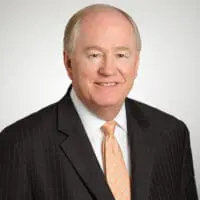Employee Benefits
EAPs That Meet Four Requirements May Avoid Application of Health Care Reform
In September 2013, the IRS, HHS, and DOL collectively issued Notice 2013-54, which stated that, through 2014, benefits provided through an EAP were considered excepted benefits if the EAP did not provide “significant benefits in the nature of medical care.” The notice did not elaborate on the terms “significant” or “medical care,” but the notice permitted employers to use a reasonable, good faith interpretation of these terms. More information about Notice 2013-54 can be found here.
In October 2014, these same agencies collectively issued final regulations, effective for plan years beginning on or after January 1, 2015, which require an EAP to meet additional criteria for its benefits to qualify as excepted benefits. Specifically, the regulations set forth the following four criteria:
(1) The EAP cannot provide “significant benefits in the nature of medical care;”
(2) The EAP benefits cannot be coordinated with benefits under another group health plan;
(3) The employees cannot be required to make premium payments or contributions to participate; and
(4) There can be no employee cost-sharing under the EAP.
With respect to the first criterion, this is the same requirement found in Notice 2013-54. Similar to Notice 2013-54, the final regulations do not provide precise benchmarks concerning the level of medical care that would be considered “significant.” The regulations provide that, “For this purpose, the amount, scope, and duration of covered services are taken into account.” The preamble to the regulations provides, as an example, that “limited, short-term outpatient counseling for substance use disorder services (without covering inpatient, residential, partial residential or intensive outpatient care) without requiring prior authorization or review for medical necessity does not provide significant benefits in the nature of medical care.” Employers may wish to review their EAP plans to assess the level of medical care provided. In many instances, EAPs simply provide brief, easily-accessible counseling sessions to employees faced with psychological, financial, and/or legal difficulties affecting workplace performance. Based on the example above, these EAPs may satisfy the first criterion.
With respect to the second criterion, the final regulations provide two elements that must be met to satisfy this criterion:
(1) Participants in the separate group health plan must not be required to use and exhaust benefits under the EAP before an individual is eligible for benefits under the separate group health plan; and
(2) Participant eligibility for benefits under the EAP must not be dependent on participation in another group health plan.
Employers may wish to carefully review their EAP plans to ensure that both of these elements are satisfied. Particularly, employers might review each medical coverage option offered to employees and confirm that none of these options have a separate EAP offered only to enrollees in that specific medical option.
With respect to the third and fourth criteria, the EAP cannot require employee premiums, contributions, or cost-sharing as a condition of participation in the EAP. Employers may wish to confirm that employees are not required to pay to participate in the EAP.
Employers may wish to carefully review these new criteria and verify that their EAPs qualify as excepted benefits. Failure to do so may lead to tax penalties. For example, an EAP that does not meet the excepted benefits criteria would be required to comply with the prohibition on annual dollar limits, and would be subject to an excise tax of $100 per day per affected individual for noncompliance. Employers prepared to demonstrate compliance with these additional requirements might avoid possible Health Care Reform tax penalties.











